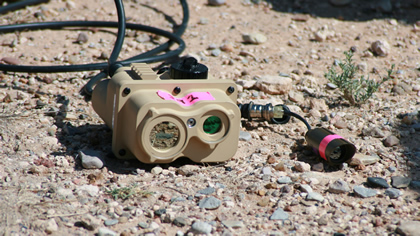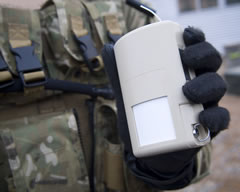
Unattended Ground Sensors (UGS) are a central element in the U.S. Army Brigade Combat Team modernization effort. Part of the FCS Spin-Out program are two UGS systems developed by Textron Systems – the AN/GSR-9 Tactical-UGS and AN/GSR-10 Urban-UGS sensors, (also known as the Urban Military Operations in Urban Terrain Advanced Sensor System – UTASS).


The two sensors will operate with common communications hubs and processing elements, to perform mission tasks such as perimeter defense, surveillance, target acquisition and situational awareness. T-UGS is designed as a modular set of multi-mode sensors, including seismic, acoustic imaging and chemical, biological and radiological sensors providing detection, classification and early warning of a presence of radiating materials. U-UGS is designed primarily for operation indoors, obtaining situational pictures in urban setting. Hand emplaced by soldiers or ground robots, the systems enables a small unit to monitor ‘urban choke points’, such as corridors or stairwells, sewers, culverts and tunnels.
Each sensor is equipped with wireless links transmitting target data to the gateway. When deployed, sensors are linked to a gateway system that transmits target data or situational reports back to the user, over the brigade’s wideband data network. In future scenarios, these sensors will provide the outposts for small units, equipped with unmanned systems and precision attack munitions. As UGS will be triggering alerts in the presence of potential threats, other sensors, such as the Honeywell T-Hawk unmanned system (Class I XM156) could be scrambled for a closer look. This backpackable ducted-fan UAV system is powered by a small gasoline engine and is equipped with a small electro-optical payload assembly that can carry a daylight or infrared camera. The T-Hawk can hover over the suspicious target for about half an hour, or perch for longer periods of time from a nearby vantage point. Images from the UAV are monitored by the controller at the infantry squad, and also transmitted over the wideband network to the platoon command post for further action.
This backpackable ducted-fan UAV system is powered by a small gasoline engine and is equipped with a small electro-optical payload assembly that can carry a daylight or infrared camera. The T-Hawk can hover over the suspicious target for about half an hour, or perch for longer periods of time from a nearby vantage point. Images from the UAV are monitored by the controller at the infantry squad, and also transmitted over the wideband network to the platoon command post for further action.




















